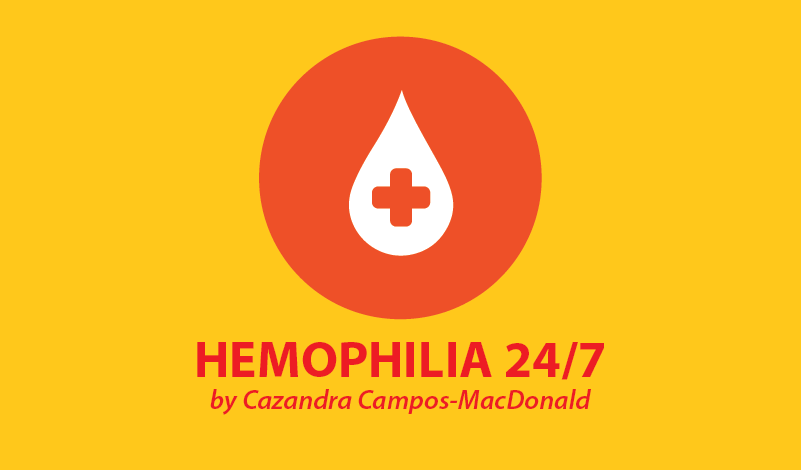Does it Feel Buzzy or Achy?

When your child is little and isn’t able to verbalize pain, you find yourself worrying constantly that you are missing something. “He’s crying, is he having a bleed? Or does he need a diaper change?” You must be the one who identifies why your little one is in distress. As they get older, you start to hear, “Mommy, my knee hurts. Mommy, my elbow hurts.” Then you wonder what they did. “Could it be a bleed? Or just a bump?”
My 11-year old son, Caeleb, has had more bleeds than I can count in his right knee and right ankle. This is the time of year when the weather starts to turn cooler, and Caeleb has more pain than usual. His joints have undergone a great deal of damage due to repeated joint bleeds (target joints) and he aches quite a bit. One of the most difficult things for Caeleb to learn was to distinguish the feeling between a bleed and arthritis. It’s all about the words he uses.
Everyone who experiences bleeds in their joints has a unique way of describing the feeling. Caeleb has a special word he uses to let us know that a bleed is in the initial stages of happening … buzzy. When he says his knee feels buzzy, we infuse. It never fails; when he describes a buzzy feeling, his joint will bleed. Some people say their joint “tingles” or “feels like cotton,” but for Caeleb, it is buzzy.
When his joints feel “achy” it’s arthritis. That’s when I give him a dose of Tylenol to help combat the pain.
It’s great when your child can tell you exactly what is going on, but when they are little you have to be a detective of sorts to figure out what they need. It can be scary. Sometimes you feel a joint and if it is warm to the touch, then you know a bleed is active and you infuse. If you had known a little earlier, you might have been able to prevent the bleed from getting out of hand. The truth is we can’t catch every bleed early. Some children will feel a bleed coming on, but are too busy playing and having fun that they don’t want to stop and infuse. And, of course, they pay for it later with pain and a longer recovery time.
I am a big believer in the mantra, “Read the clues, then infuse!” If I have the slightest doubt about whether I should infuse my son, I will infuse. I would rather play it safe. Of course, I would call my Hemophilia Treatment Center first, but sometimes you need to go with your gut instinct.
Encourage your children to describe their bleeds. They are the ones who have the first-hand experience of what a bleed feels like and often will be able to feel a bleed coming on before any outward, visible signs are evident. When they have the words to describe their bleeds, they gain some control over their bleeding disorder – and that is priceless.
***
Note: Hemophilia News Today is strictly a news and information website about the disease. It does not provide medical advice, diagnosis or treatment. This content is not intended to be a substitute for professional medical advice, diagnosis, or treatment. Always seek the advice of your physician or another qualified health provider with any questions you may have regarding a medical condition. Never disregard professional medical advice or delay in seeking it because of something you have read on this website. The opinions expressed in this column are not those of Hemophilia News Today or its parent company, Bionews Services, and are intended to spark discussion about issues pertaining to hemophilia.








Leave a comment
Fill in the required fields to post. Your email address will not be published.